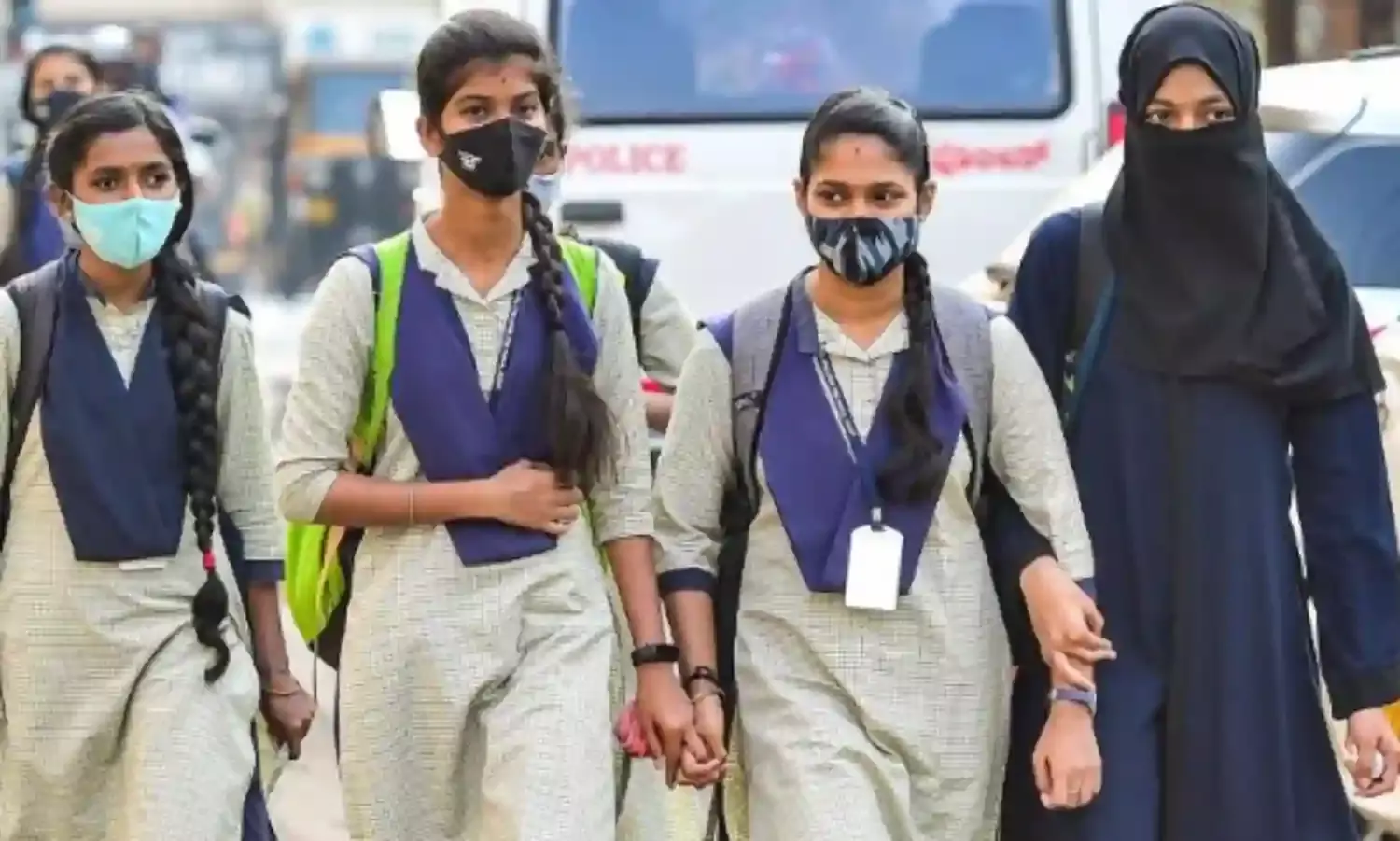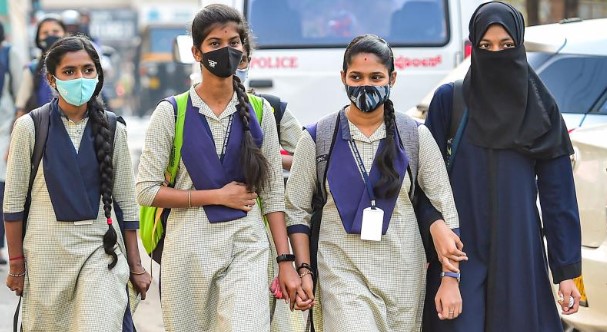What is More Empowering? A Dress Code, or Education?
Strengthening the arms of patriarchy

Which, do you think, is more empowering for women and girls? Is it when they attend institutes of higher learning to empower themselves? Or, is it the way they stick to dress codes they have been conditioned to wear, according to the dictates of the faith they belong to?
This question was recently answered by the Karnataka High Court which decreed that as the hijab was not mandatory in Islam, institutes of higher learning have the right to decide on dress codes for women students. Unshaken by the court’s decision, many women students of these institutions retaliated stating that they would prefer to give up on education and continue to wear the burqa/ hijab. This will have dangerous repercussions on their future. Without education, they will remain as backward and unempowered as their Islamic faith has decreed them to be. More dangerously, they will unwittingly fall into the diabolic trap the Hindu Right has laid for them, by forcing them to forego the burqa if they wish to continue to educate themselves.
The women are talking of “freedom of choice” to wear the burqa as, according to them, it is a principle of belonging to the Islamic faith and a mark of their identity. But what “choice” are they talking about when this “choice” has been compelled by patriarchy? Many of the young women from the minority community had persuaded their parents to allow them to go to college on the condition that they would wear the burqa. But now they may have to forego a college education, if they insist on wearing the burqa. Their parents will be happy to see them married off.
“Choice” is defined as “the power or right of choosing.” Are these young women really “choosing” to wear the burqa at the cost of surrendering their education? Or, are they actually surrendering to the ultimate goal of the Hindu Right Wing groups, who do not want women of the minority community to be empowered?
Muskan Khan, a student raised slogans of Allah-hu-Akbar after being heckled by a right-wing Hindu mob shouting slogans of “Jai Shri Ram” in Karnataka this February. She acted impulsively in a moment of anger. She did not know then that she was actually playing into the hands of the saffron-clad, “Jai Sree Ram” shouting hooligans. The hooligans were not even linked to the college at all except. All they did was to create unrest and insist on the saffronisation of institutes of higher education in Karnataka.
Whether it is right to wear the hijab to school or college or not, calls for a study on the dilemma. One needs to understand if the Hindu saffronised Right Wing is using the hijab controversy as a cleverly disguised political strategy. Are they doing this to spread their hate for the minority community among the majority, most of whom are not as hate fuelled as the saffron groups. The Right Wing may have hoped that though the controversy began in Karnataka, it will rapidly spread to other states of the country.
Recently, a female health worker was not permitted to enter the office in Malda District of West Bengal because she was wearing a hijab. According to Afroza Khatun who teaches Bengali at the Surendranath College for Women, these “rebelling girls” are unknowingly stepping into a trap created by the Hindu Right. Scholars are wading through volumes of research on the hijab debate when the true purpose is far removed from any scholarly dispositions.
Proponents of Hindutva have stated that their singular aim is to “empower” their “Muslim sisters.” This is a cleverly devised excuse to “excite the masses”. The Muslim Women Bill 2019 proposed to declare the practice of “triple talaq” or instant divorce, void and illegal. It was approved on June 12 2019 by the ?Supreme Court. On August 1, 2019, triple talaq/teen talaq was declared a crime according to a Faujdari Court that deals with Criminal cases. These courts are also known as Sessions Courts. This day was also declared as the “Muslim Woman’s Day!” The saffron groups claimed that this was a classic example of “imparting justice” to Muslim women. Is it false propaganda? Let us take a closer look. An “instant divorce” ensures that the husband will be arrested. But there is no clarity on how the “divorced wife” will fend for herself and her children. Is this then empowering the husband or the divorced wife? Think about it!
Schools in India have made the uniforms compulsory. In colleges, it is optional. But this must be stated clearly, much before the academic term begins. The students need to be aware. A ban on the hijab for Muslim girls cannot be imposed as an afterthought, as this deprives the girls of an education that will empower them.
The Right to Education was made a Fundamental Right by the 86th constitutional amendment in 2002, and Article 21A was added to the Constitution under Fundamental Rights. Education is a prerequisite for a person's development. A nation cannot flourish unless its population is educated. So, the young women who have decided to wear the hijab and give up going to college, must realise that they are taking several steps backwards. And this is exactly what the saffron groups want! The doors to education must be kept open at all costs.
We must wait and watch which the Muslim girls choose, education or the hijab. They must remember that the “choice” to opt for the hijab was not theirs to make. It was made hundreds of years ago by their patriarchal forefathers, who were also responsible for the criminal practice of triple talaq. The women never had a choice at all.
In patriarchal societies, men have the power and control over manipulating women’s conduct. They use this power to enforce “modesty” codes on women. This is traced back to man’s unconscious fears of the “castrating mother”. Edmund Bergler, a social scientist, argued that unconsciously, every man is afraid of every woman.
A man’s relationship with his mother evokes in him fears, which, as he grows up, he transfers to all women. These are: fear of being starved, devoured, poisoned, choked, chopped to pieces and drained. All these culminate in a fear of being castrated. They lead the man to evolve an unconscious, powerful portrait of himself.
Therefore, if he finds a woman imitating and/or equaling his way of dressing, an integral part of this ‘powerful portrait,’ his defenses are up at once. He proceeds, with the help of this ‘powerful portrait’ and the ‘strength’ he derives from patriarchy, to ‘cut the woman down to size.’
Like forcing Muslim girls to withdraw from education and hide behind their hijab “to sustain their cultural, social and religious beliefs”, all structured by men. This includes the Hindu Right Wing hooligans and the Muslim ‘fathers’.
They are participating in a ‘race’ to prove which one of them is more patriarchal, fundamentalist, and more oppressive of women in general and Muslim women in particular. By insisting on wearing the hijab and sacrificing their right to education the Muslim girls, are unknowningly, strengthening the arms of patriarchy. They need to decide soon whether education is empowering, or the hijab.




